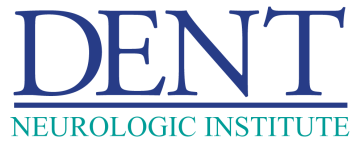Migraine Treatment: Prevention & Rescue
What are Migraines?
Migraine is an episodic disorder characterized by severe headache generally associated with nausea and or light and sound
sensitivity.
Migraine Prevention Strategies
Goals of prevention:
- Reduce the frequency, severity and duration of migraine headaches
- Improve responsiveness to treatment of acute attacks
- Reduce excessive overuse of acute medications
Migraine Triggers
Migraine prevention may be improved by avoiding certain foods or stresses, and approximately 90% of patients have
identified as least 1 trigger for their migraines. Below is a list of common migraine triggers that should be avoided:
- Emotional stress
- Too little or too much sleep
- Odors
- Skipped meals
- Changes in weather
- Alcohol (red wine)
- Nitrates (luncheon meats, hot dogs)
- Monosodium Glutamate (MSG) (some soups, fake powder cheeses, spice mixes)
- Caffeine
- Cheese
- Chocolate
1. Migraine Prevention Medications
These medications are NOT used to treat an acute attack. They should be taken daily to prevent migraines:
- Topamax (Topiramate)
- Nortriptyline
- Gabapentin
- Venlefaxine (Effexor)
- Lamotrigine (Lamictal)
- Propranolol (Inderal)
- Valproate (Valproic Acid)
- Vitamin B2
- Amitriptyline (Elavil)
- Feverfew
- Magnesium Oxide
- Lexapro (Escitalopran)
Antiseizure and Antidepressants medication can be used to treat migraines. These medications are used because migraines
are very similar to seizure in the way they present in the brain.
Note:
- Topamax should not be taken if excessive amounts of alcohol have been ingested, as this can cause acidosis. Also, Topamax can cause kidney stones in some people. Increased hydration is recommended with this medication.
- Magnesium can cause GI discomfort or even diarrhea. It is best taken before bed.
2. Migraine Rescue Medications
- Abortive or symptomatic therapy for migraines is used for sudden or acute episodes of migraines.
- These medications should be used at the beginning signs of a migraine within 1-2 hours.
- These medications should NOT be taken daily as these medications may lead to a medication overuse headache.
NSAIDs (Non-steroid anti-inflammatory Drugs)
- Naprosyn (Naproxen, Aleve)
- Ibuprofen (Advil, Motrin)
- Diclofenac (Cambia)
- Ketorlac (Toradol)
What you should know about NSAIDs:
- NSAIDs are more often used for short-term head pain from migraine disease
- Generally used for mild to moderate headache pains from migraine disease
- If taken for long periods of time, NSAIDs can lead to medication overuse or rebound headaches, GI upset or even ulcers.
Triptans
- Sumatriptan (Imitrex, Onzetra)
- Rizatriptan (Maxalt)
- Zolmitriptan (Zomig)
- Naratriptan (Amerge)
- Frovatriptan (Frova)
- Eletriptan (Relpax)
What you should know about Triptans:
- The Triptan medications should only be taken a maximum of 2 doses in one day and a total of 3 doses weekly as these medications are potent vasoconstrictors.
- You will only be prescribed 9-12 doses a month
- Triptans and NSAIDs may be used together
- DO NOT use these medications if you are pregnant, history of stroke or heart disease
- Triptan Reaction: Triptan medications may cause typical side effects after taking a dose. The symptoms include anxiety, increased heart rate, dizziness and fatigue; however these symptoms are temporary.
Helpful Websites:
https://americanmigrainefoundation.org/
https://migraineresearchfoundation.org/
Diary Resource: BonTriage headache tracker App

